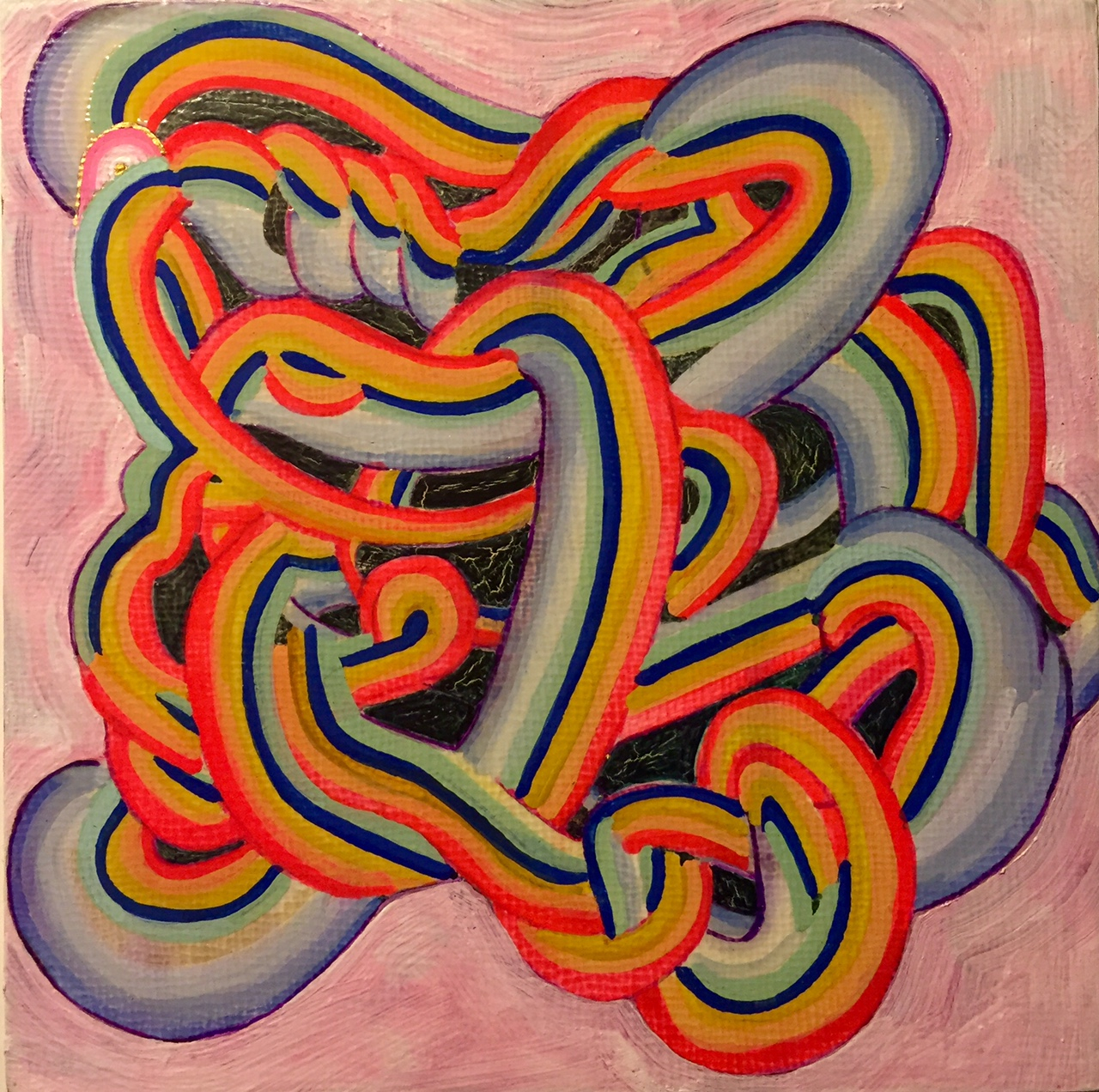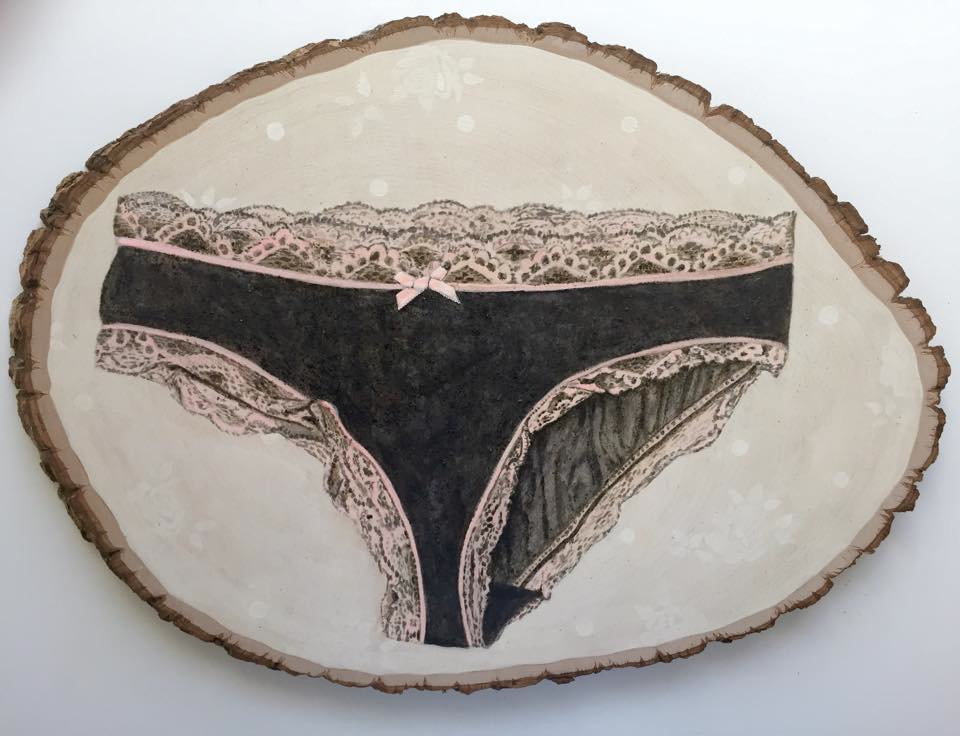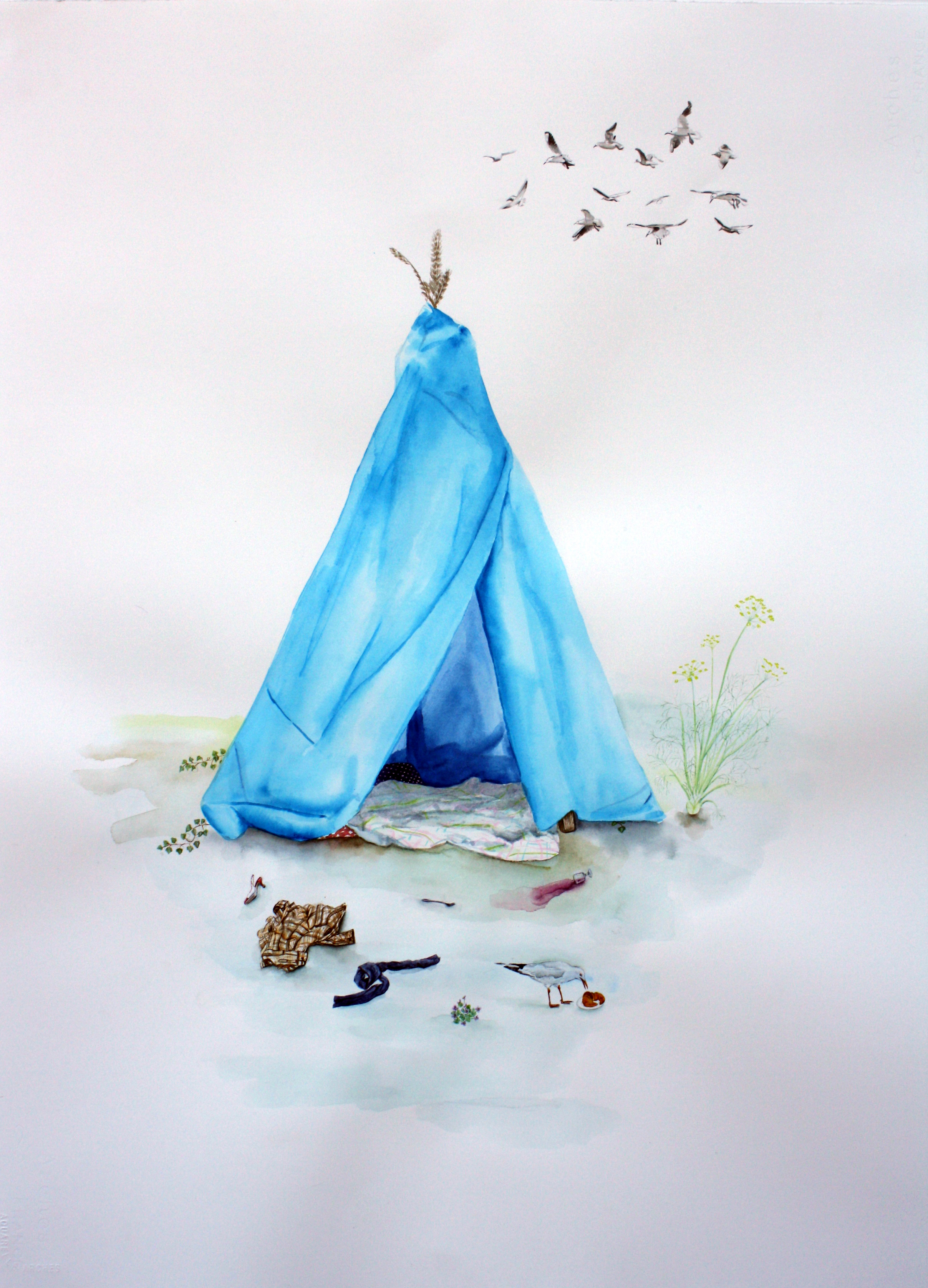Steve Locke: When we were in grad school together you turned me on to the writings of Mira Schor. In those writings, I discovered a way of working that allowed me to investigate figuration at a time when that was actively discouraged. Also, because our interests in gender, depiction, and subjectivity have dovetailed over the years, it’s always exciting for me to see the ways you address these in your work.
I’ve always had a sense of seeing something from the inside out when I look at your work. It’s not just the way things are, it’s more like a combination of all different streams of time that come together for a moment to make an image.
What has been evident to me in your work is a tremendous amount of power and weight in objects and images. Things float and fall, or they balance with formal elegance and a sense of danger. Sometimes, like in Back in the Saddle they actually seem to destroy the subject with the elements of modernist design. There is a sense of tremendous violence in your work. Not just in the imagery, but in the methods and materials. Toxic pigments, handmade inks, sewing (or suturing), cutting, and reforming the work and the body (sometimes your own, as in Most Improved) in the work are the hallmarks of your practice. At first I thought it was at odds with the sort of gendered traditions of home and then I realized how sexist my thinking was. I also think, in this time of tremendous backlash against women, that the urgency of these actions are clearer to me.
How do you understand the use of power in your work, and how do you use materials and methods to convey its presence or absence?
Disquietude
The idea of power can have several meanings. It means there is an ability to do or act and that there is the capability of doing. It is also possible to understand the implication that one may have power over another’s ability to do or act. I have thought about these conditions for a very long time- much longer before realizing that I was someone who would make images and that an image could have consequence.
As a young girl I realized that power came with the ability to be heard. And not only to be heard, but to be listened to and to be allowed to speak. Within my family, I found it difficult to find space to have my voice heard; often being spoken over, ignored, or simply not finding a gap to enter into conversations. It was clear to me that male words were valued more for some reason and it was maddening. Rather than staying angry and fighting out loud, I retreated and realized there was a quiet power in being invisible. There was something to being able to slip in and out of a situation and this realization has directly influenced how my images coalesce. Navigating a conversation has always been pivotal for me. How much to add, how much to divulge, is it worth the energy, and more importantly when is the right time to interject are questions that still run tandem with my daily interactions.
The internal and external coexist through the tension of juxtaposed images in the same way a cool smile can belie the heat of anger in one’s gut. I don’t think I would have used the word ‘violent’ to describe my work but can see it now as you have described it. I think honesty can be violent and there is truth in humor. This is where the poetry is found and a cliché can be revived through a visual image.
In depicting something specific, I have often wanted there to be an effortlessness in the final representation; a gloss of the process. I understand that the delicacy of watercolor washes and the exactness of details with gouache give credence to an image that may seem confrontational or aid its "tongue-in-cheekness."
This quiet command of materials is akin to a woman’s wile- her smile and nod, a silent acquiescence. Painting on old stained vintage linens that were once napkins or placemats provides a context to confront my fears of motherhood, my doubts of wifehood, my femaleness.
More recently, my investigation and research into the origin of materials has allowed me to make work in which the ingredients have a direct bearing on the inherent meaning. Rather than only being a picture of something, these explorations hover between image and object. Now, when I choose a material, I think about its greater significance. This has given me the freedom to unapologetically embrace a variety of subjects. When I use oak gall ink that I have made, I know that it is permanent; but caustic, and will eventually ‘bite’ through the surface I’ve used it on. There are other inks that I use that I know will fade and disappear.
How language, words, and images are interwoven have always been important. I love old paintings that have banners swirling through the composition declaring what is true or have a small note lovingly painted with the artist’s name. So beyond titles, I am using text in a much more direct way. Right now I am working on a fresco panel with historic blue colors and the sole words, Forever is a long time, painted as the subject.
So, for me, power comes down to the idea of voice, of being heard, and choosing whether to scream or whisper.
Candice Smith Corby received her BFA in painting from Tyler School of Art and her MFA in painting from MassArt. She is the gallery director at Stonehill College where she also teaches in the Visual and Performing Art Department. She also combines her studio research with traditional material workshops offered, through the arts collective The Bottega (www.thebottega.it). She is represented by the Miller Yezerski Gallery where she will have a solo exhibition in November 2015. Her work is included in the collections of Fidelity Bank, Framingham State University, Wellington Investments, and Cosmit. She has been the recipient of the MCC Fellowship in painting in 2008 and 2014, and an Awesome Grant in 2013. She is included in 34 an exhibition on the Boston Harbor Islands as part of the Isles Arts Initiative. The exhibition opens 26 July and Smith Corby's work can be seen on Great Brewster Island.





